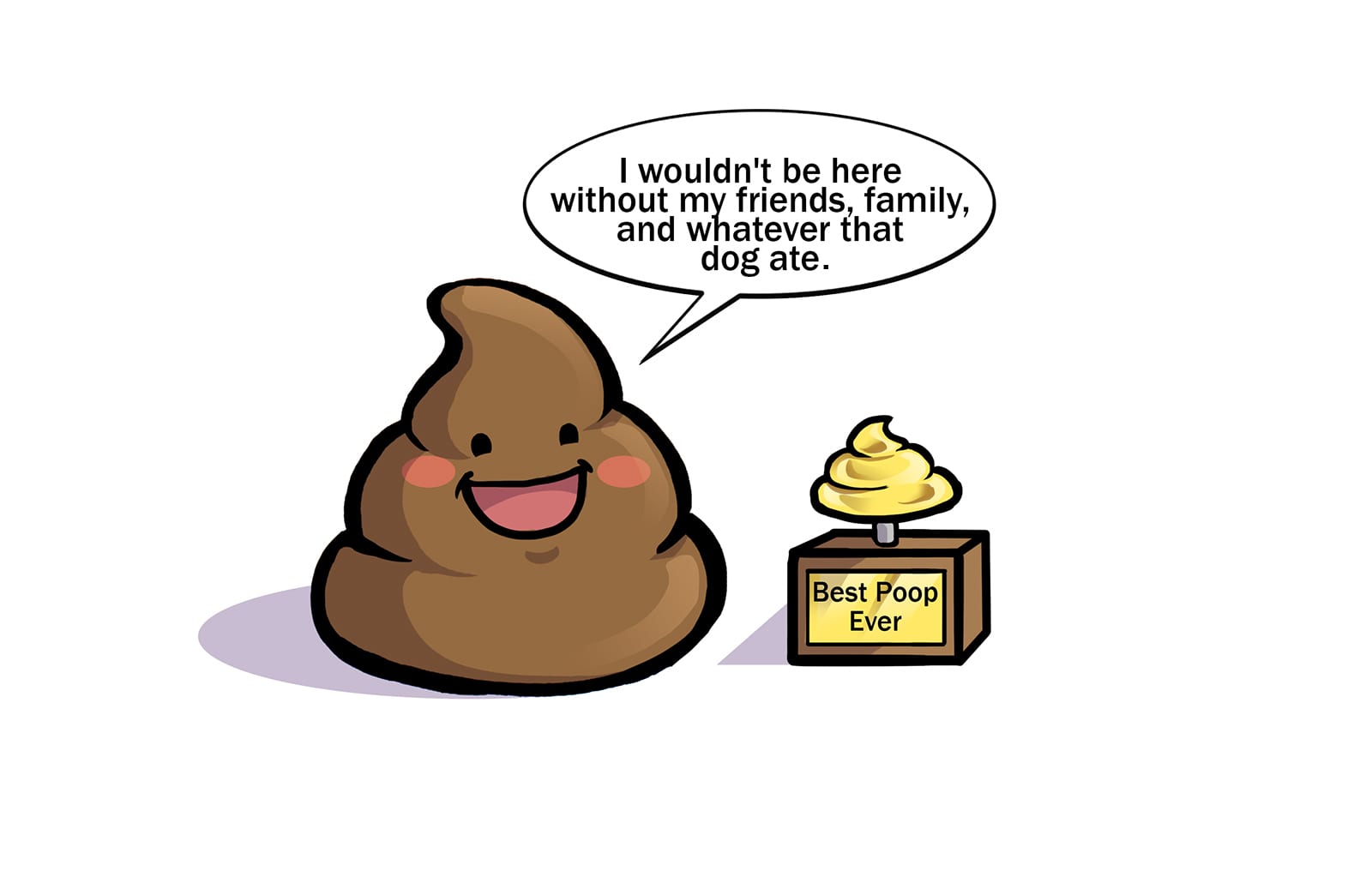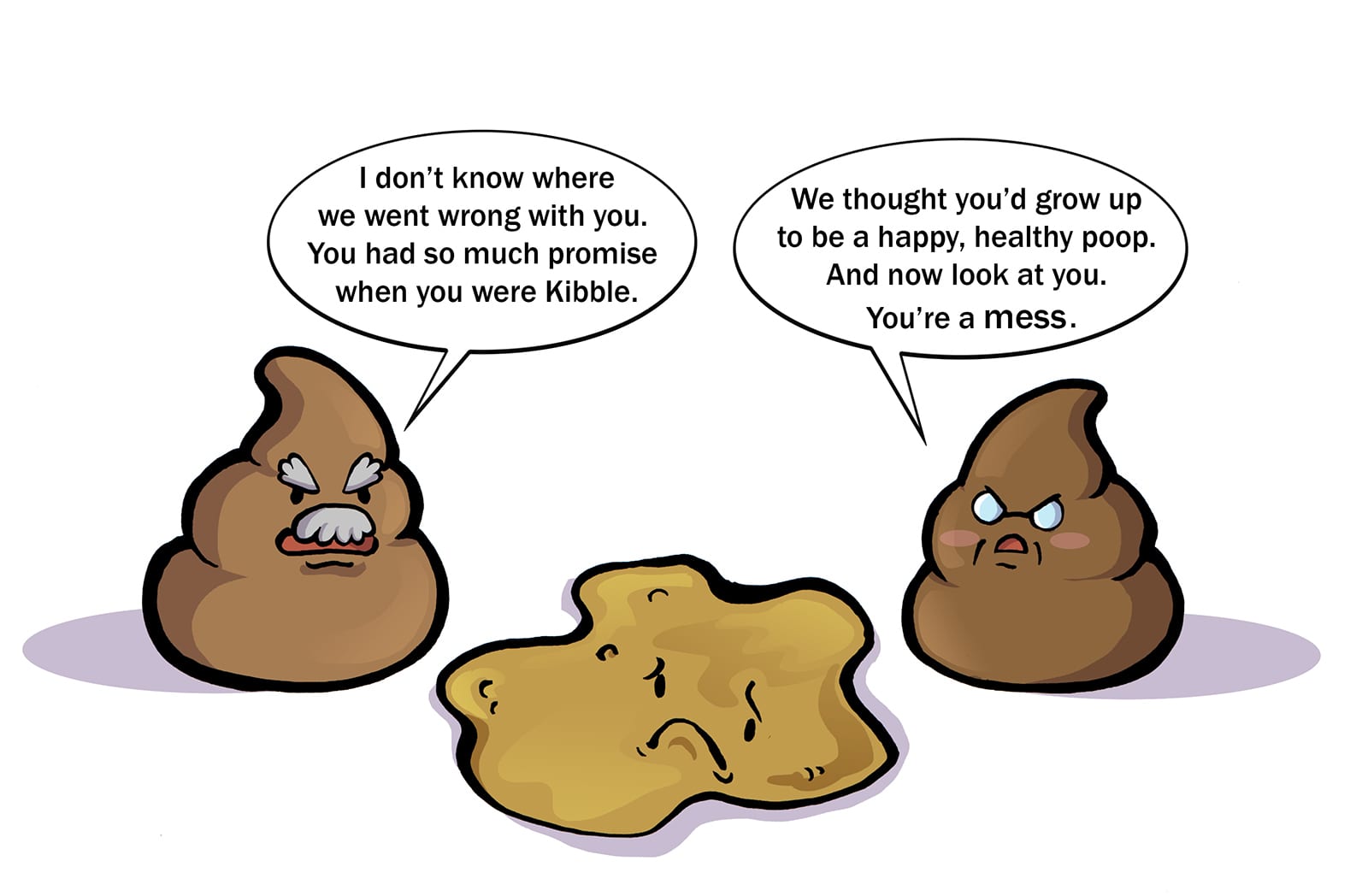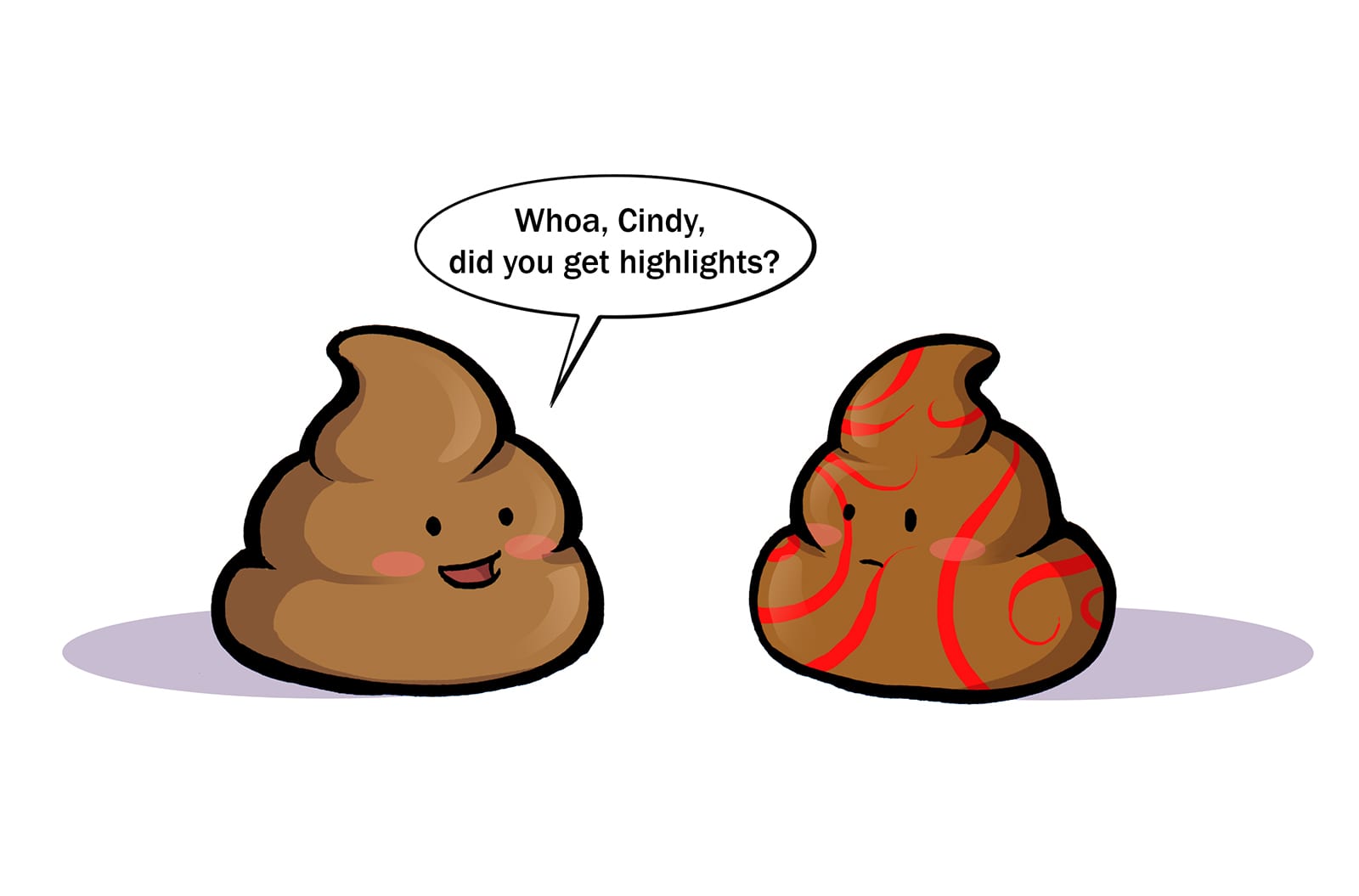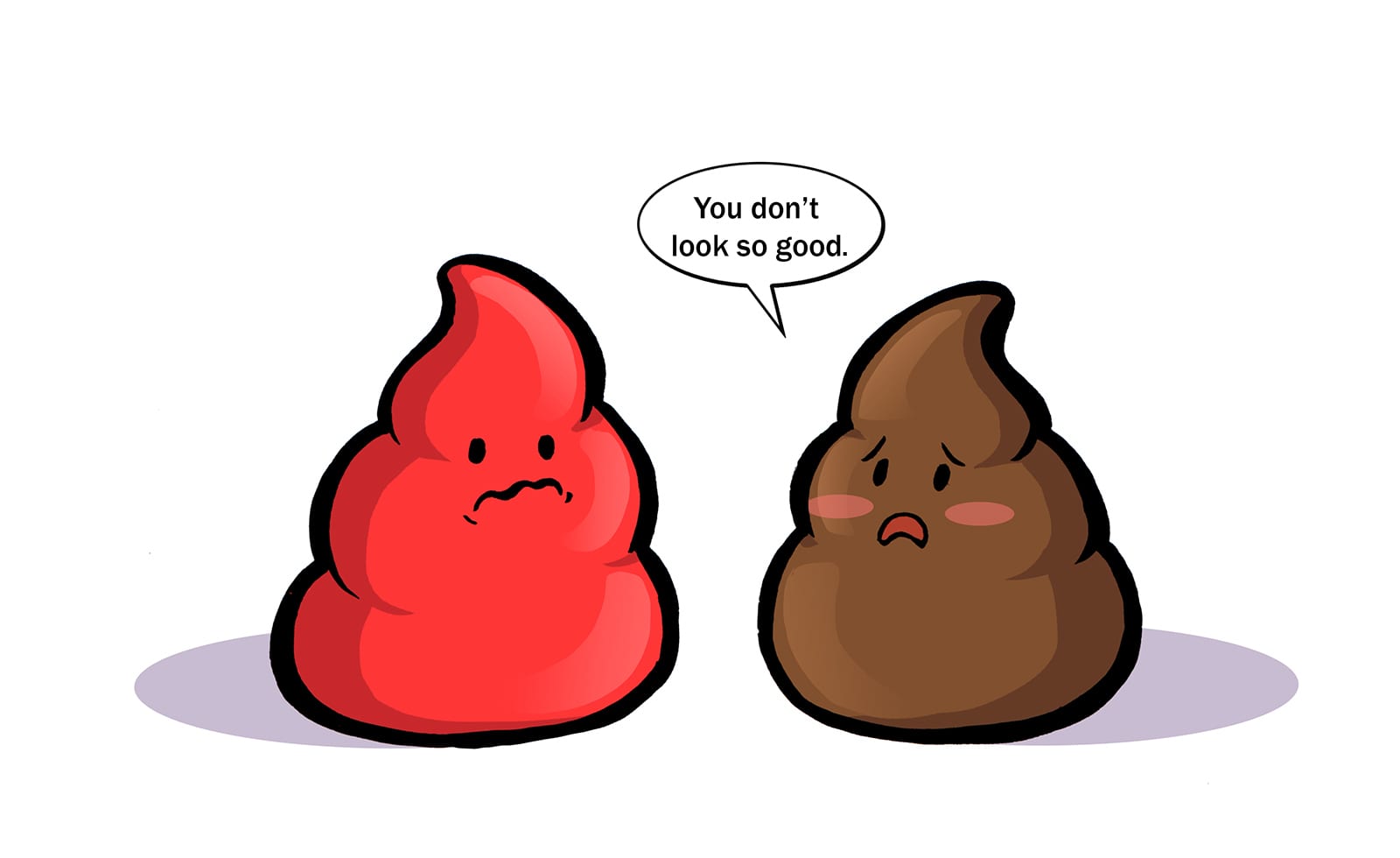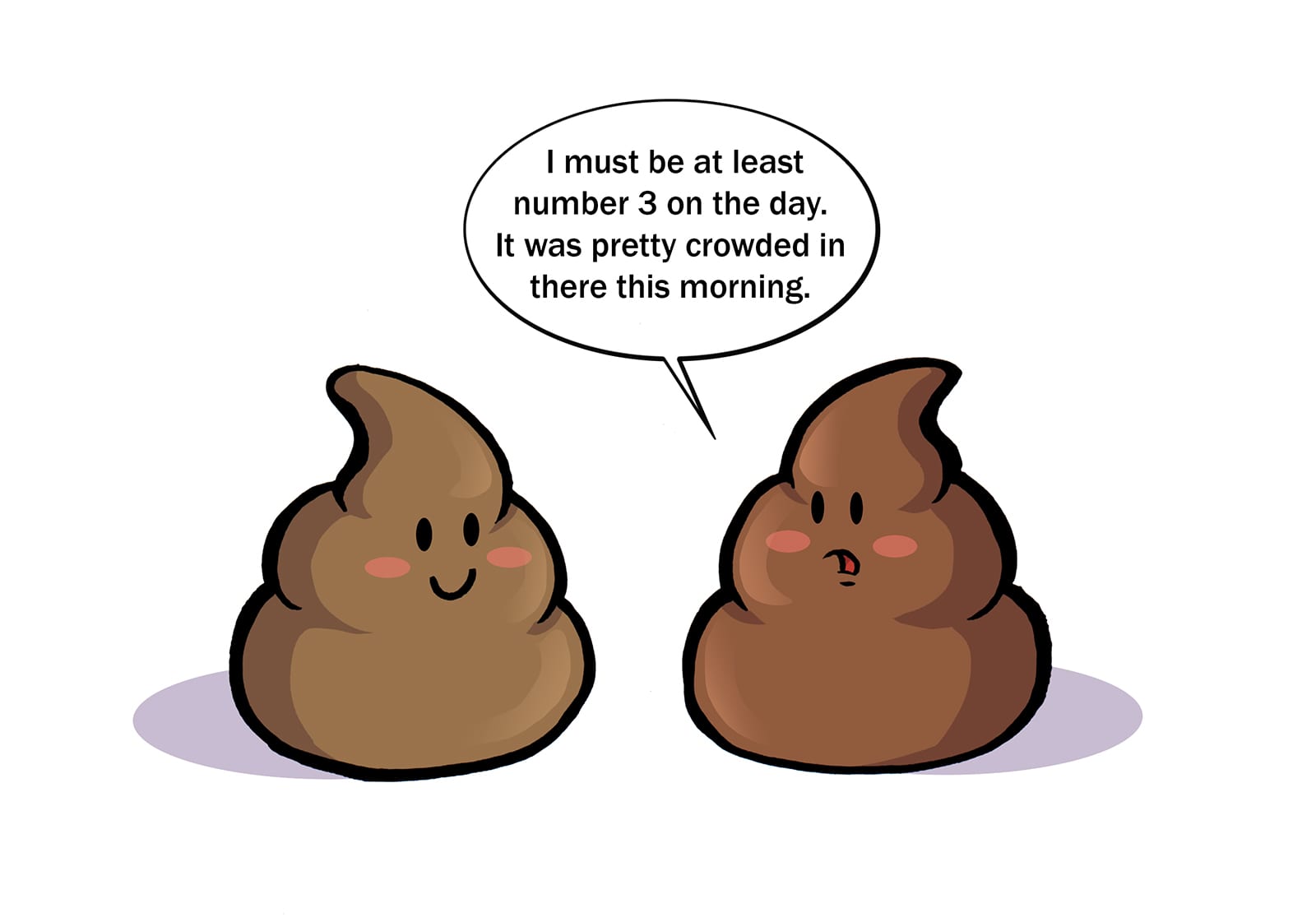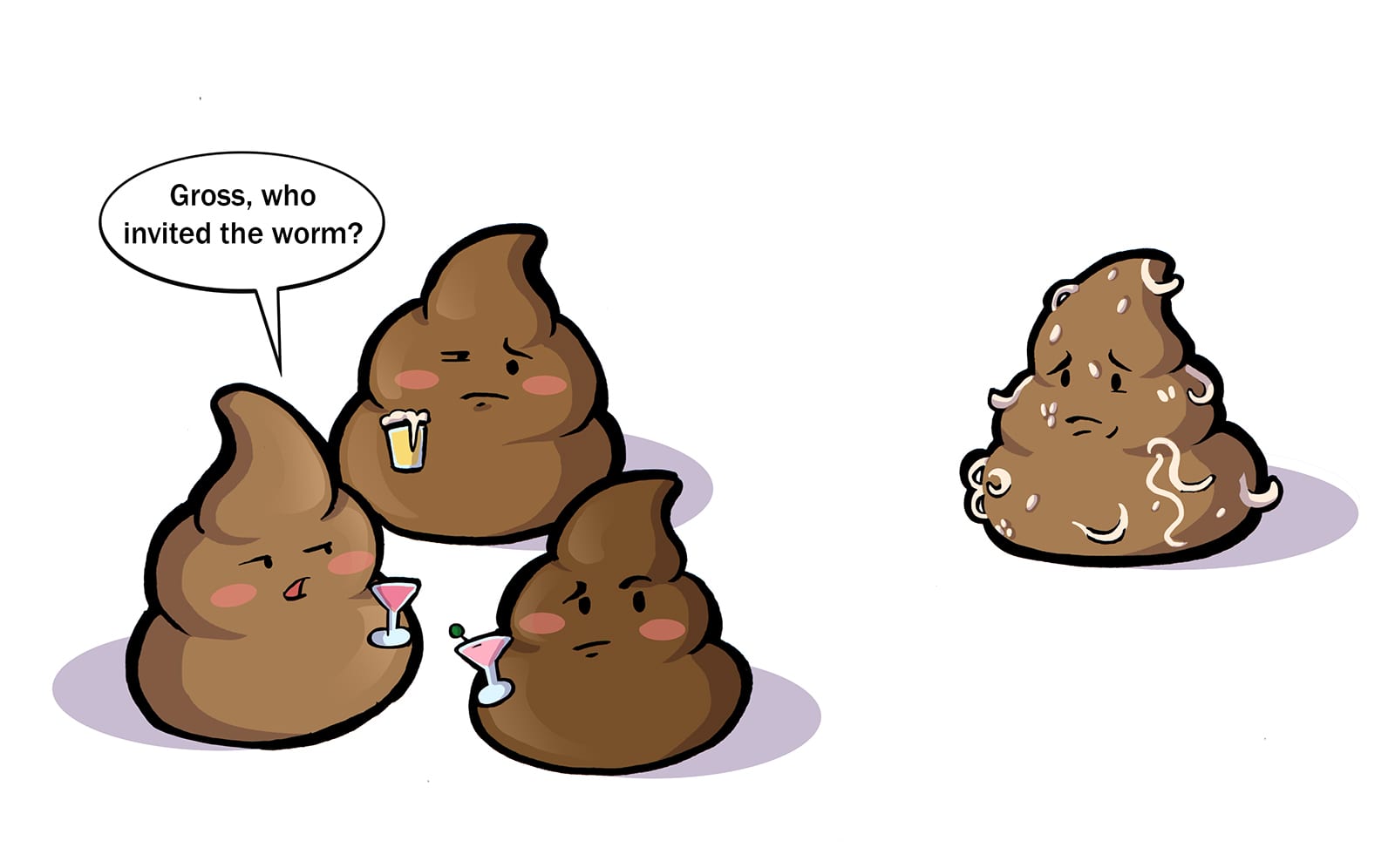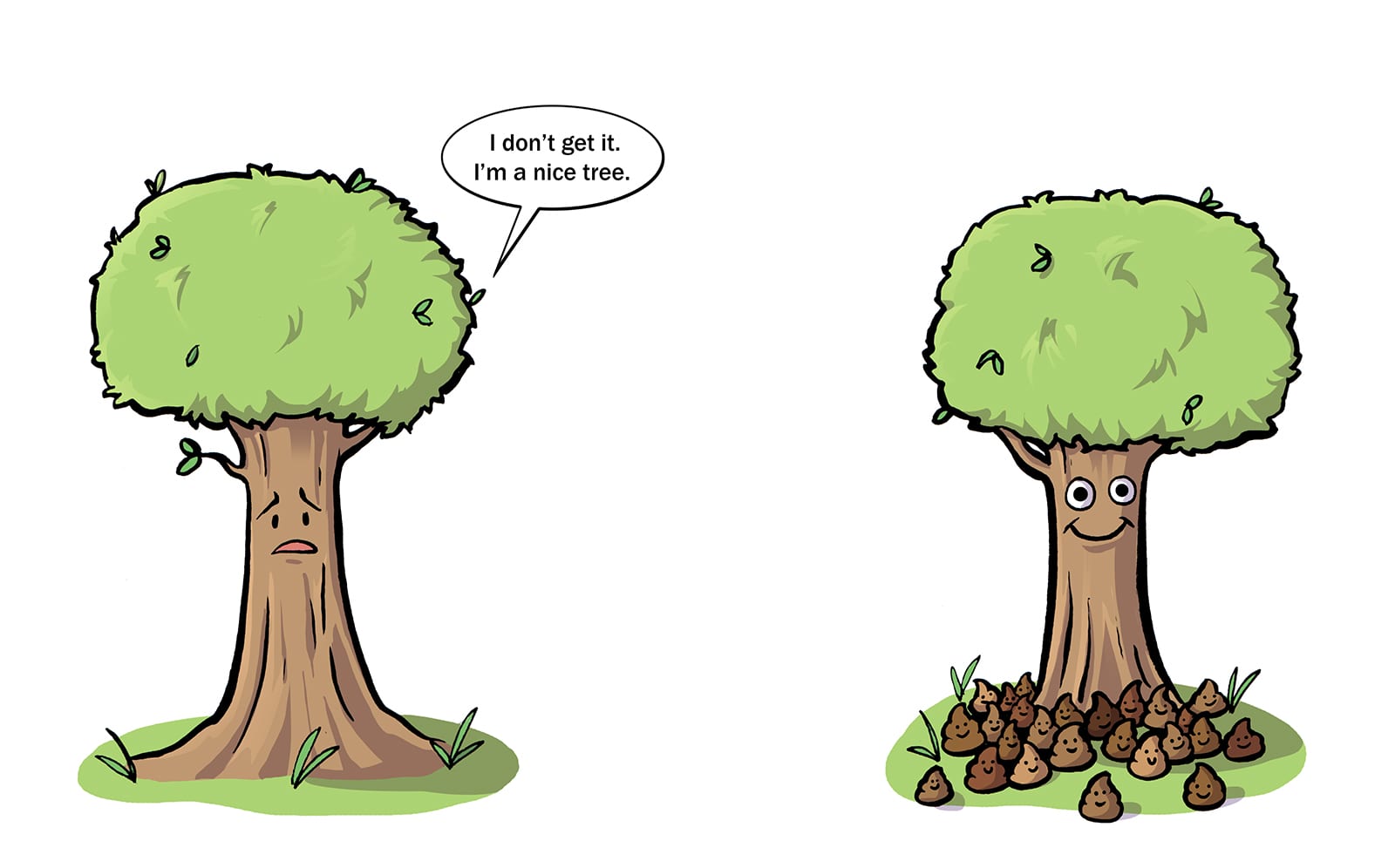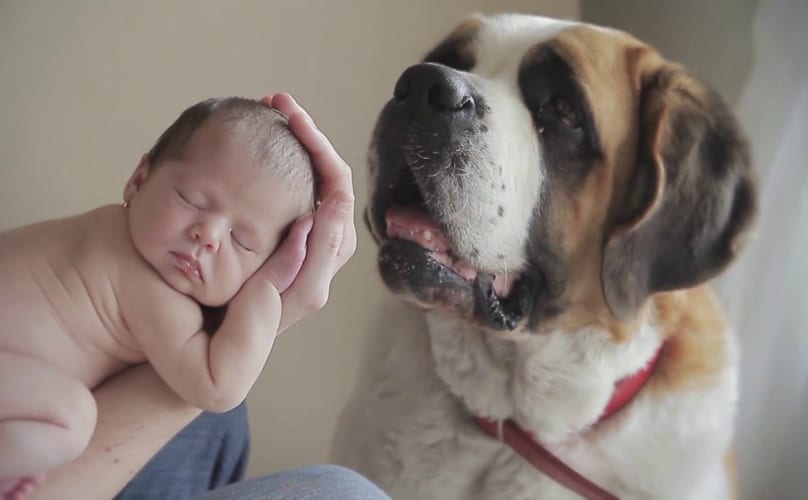This post is pawwered by the folks at Freshpet, who are spreading the good word about what your pup’s poop can reveal about their health. Freshpet knows the difference eating fresh, less processed meals can make! Freshpet makes all-natural refrigerated dog food, meals, and treats found in the pet aisle fridge.
We’re all about pup health here at Bark & Co. and sometimes, that means poop health. Often times nutrition is one of the biggest contributing factors. To get the full scoop on your pup’s poop we spoke with veterinarian Dr. Katy Nelson. She answered some of our most burning questions, and gave us a few tell-tale signs to keep on your radar, starting with color!
When it comes to your dog’s doody, not all colors of the Poop Rainbow lead to gold. If you notice something a little “off color,” it just might be a warning sign. Here are six types of poop to be on the lookout for:
1. Healthy Poop
First, lets take a closer look at what your pup’s poop should look like. Dr. Katy explained there should never be blood, mucus, or liquid at the beginning or end of your dog’s poop. Pup poop should be a normal brown and log-shaped. Your dog’s diet will play a major role in achieving those brag-worthy poos.
2. Green Poop
The color of your dog’s doody is often influenced by the type of food they’re eating. Grass and various dyes in food can both lead to a green tinge. Often times lower quality foods contain the most dyes. Feeding your dog food made with natural ingredients will help you avoid any funky colored poops.
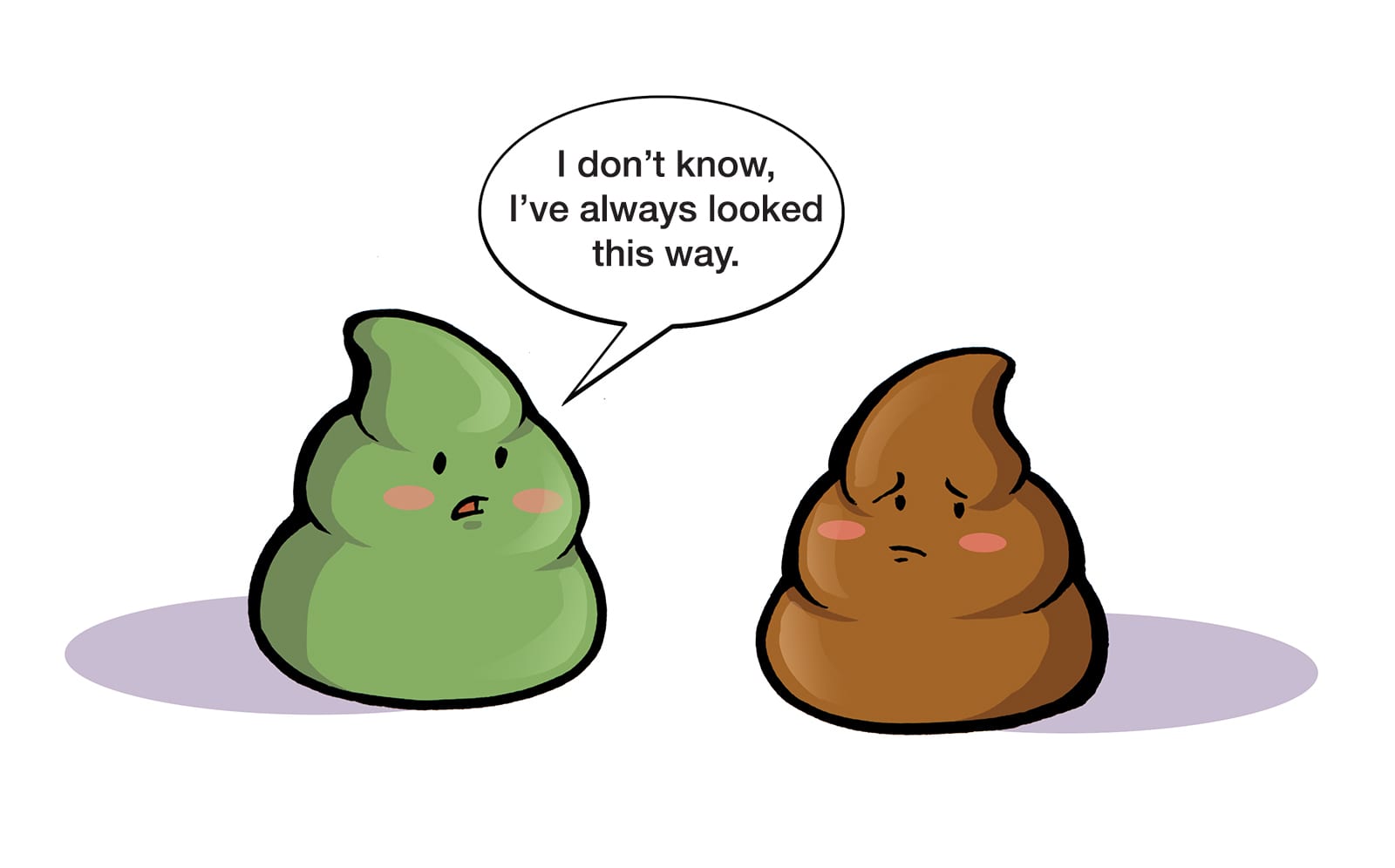

3. Grey And Rock-like
Grey, pebble-like poop might be an indication of constipation issues. If your pup seems obstructed, Dr. Katy suggests having them evaluated by a vet, who may recommend stool softeners, special diets, or fluids for hydration. Adding a little water to your dog’s food or opting for a softer food that is high in moisture may help aid the problem as well.
4. Soft Or Liquid Light Brown Diarrhea
Let’s face it: dogs aren’t the best decision-makers when it comes to what to put in their mouths. Softer poops are generally a sign that your pup is reckoning with some dietary or digestive issues. Stress can also lead to mild or severe diarrhea. Choosing a diet custom to your dog’s digestive needs will most likely be the fix. Speak with your vet to ensure you’re choosing the right food.
5. Streaks Of Bright Red Blood
Streaks of blood in your dog’s poop could be an indication of bleeding in the large bowel. This is usually caused by stress, poor diet, or parasites. Choosing a food with high quality ingredients is often key. Any time there is blood in your pup’s poo, Dr. Katy recommends taking them to the vet for a physical exam and submit a stool sample.
6. A Large Volume Of Blood
If a large amount of blood is visible in your dog’s poop, it could be a sign of Hemorrhagic Gastroenteritis (HGE), a condition more common with smaller dogs. It’s a slightly mysterious illness, likely to strike an otherwise healthy dog without much notice. Whether it’s HGE or something else, large volumes in your dog’s poo could be pretty serious.
Q & A with Dr. Katy Nelson
Freshpet Spokeswoman and Veterinarian
Q: How often should my dog poop?
A: Dogs are individuals just like people, some may go multiple times a day, while others may go once a day at the exact same time. It’s good to know what “normal” is for your dog so that you can evaluate how often they should be going. You should also keep track of what, when, and how often they are eating.
Q: What should I do if my dog isn’t pooping?
A: If your pup is going “too frequently,” or not enough, it may be a good idea to have a conversation with your vet about nutrition. They can help you determine if your dog is receiving proper nutrients, the correct amount of fiber, and so forth. If your dog’s food isn’t providing these things, it may be time to find a new formula. Foods that are made with fresh ingredients will be easier for your dog to digest, and will help to regulate their poops!
Q: Can worms be detected in my dog’s poop?
A: Typically, you won’t be able to identify worms in your dog’s stool, but there are exceptions. Roundworms are long, large spaghetti-type worms, and tapeworms can be seen on the stool and look like grains of rice that move. Otherwise, most parasites are too small to be seen by the naked eye, which is why regular fecal exams are so important to rule out parasites.
Q: I’m competitive with my neighbors. How can I help my dog produce the best poop on the block?
A: Dr. Katy says a diet with fresh ingredients is your best bet. They are highly digestible and filled with nutrients. In doing so your dog will likely have smaller, firmer, perfect poops in no time. 😉
We hope you enjoyed this fresh serving of pup poop knowledge! Remember, no one knows your dog, their diet, or their doody, better than you. Keep an eye out for inconsistencies and never hesitate to ask your vet for guidance. It’s just poop, and trust us, they’ve heard it all before.
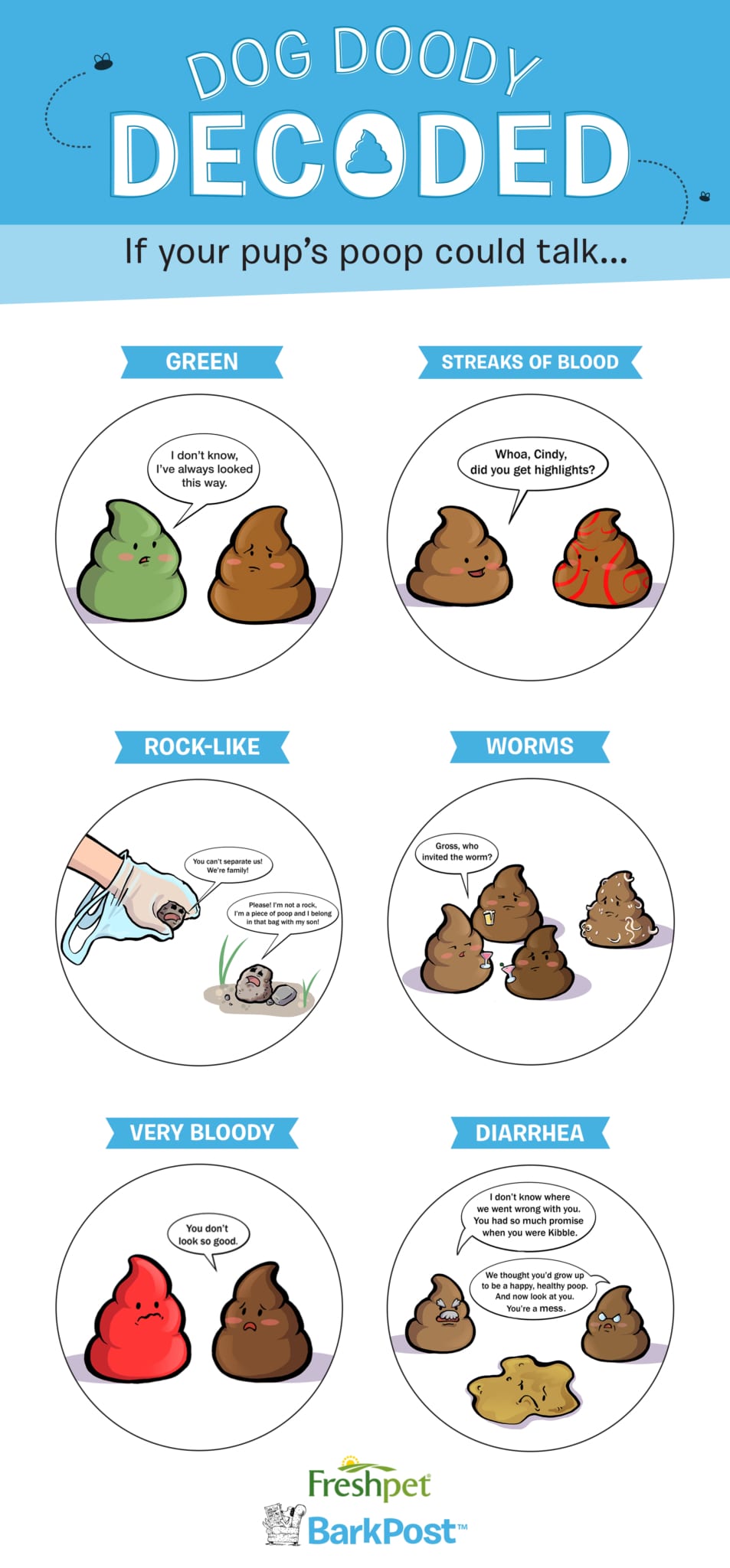

Curious to see where your dog’s food comes from? Check out our exclusive, behind-the-scenes tour, of Freshpet’s Kitchens below!
Featured image via Kelly Angel for BarkPost

